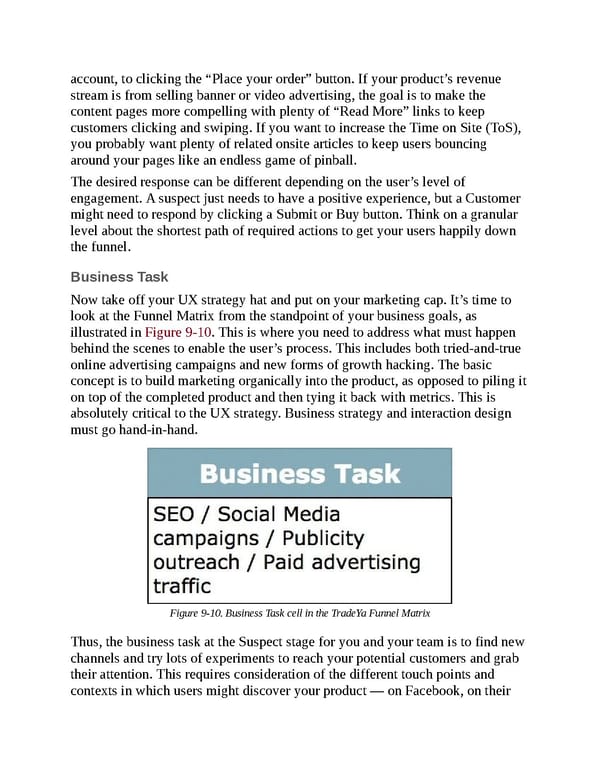account, to clicking the “Place your order” button. If your product’s revenue stream is from selling banner or video advertising, the goal is to make the content pages more compelling with plenty of “Read More” links to keep customers clicking and swiping. If you want to increase the Time on Site (ToS), you probably want plenty of related onsite articles to keep users bouncing around your pages like an endless game of pinball. The desired response can be different depending on the user’s level of engagement. A suspect just needs to have a positive experience, but a Customer might need to respond by clicking a Submit or Buy button. Think on a granular level about the shortest path of required actions to get your users happily down the funnel. Business Task Now take off your UX strategy hat and put on your marketing cap. It’s time to look at the Funnel Matrix from the standpoint of your business goals, as illustrated in Figure 9-10. This is where you need to address what must happen behind the scenes to enable the user’s process. This includes both tried-and-true online advertising campaigns and new forms of growth hacking. The basic concept is to build marketing organically into the product, as opposed to piling it on top of the completed product and then tying it back with metrics. This is absolutely critical to the UX strategy. Business strategy and interaction design must go hand-in-hand. Figure 9-10. Business Task cell in the TradeYa Funnel Matrix Thus, the business task at the Suspect stage for you and your team is to find new channels and try lots of experiments to reach your potential customers and grab their attention. This requires consideration of the different touch points and contexts in which users might discover your product — on Facebook, on their
 UX Strategy: How to Devise Innovative Digital Products that People Want Page 256 Page 258
UX Strategy: How to Devise Innovative Digital Products that People Want Page 256 Page 258